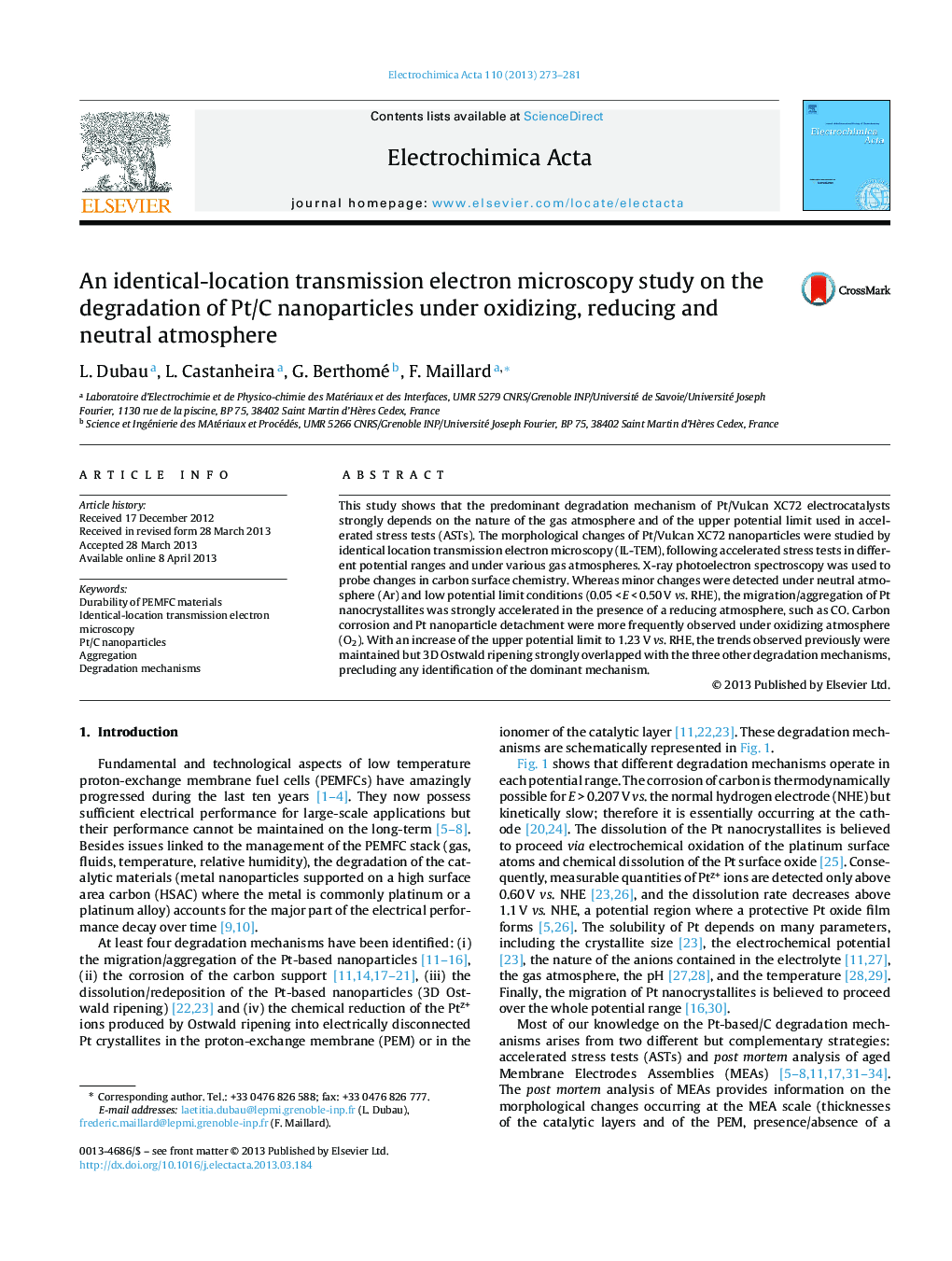| Article ID | Journal | Published Year | Pages | File Type |
|---|---|---|---|---|
| 6615514 | Electrochimica Acta | 2013 | 9 Pages |
Abstract
This study shows that the predominant degradation mechanism of Pt/Vulcan XC72 electrocatalysts strongly depends on the nature of the gas atmosphere and of the upper potential limit used in accelerated stress tests (ASTs). The morphological changes of Pt/Vulcan XC72 nanoparticles were studied by identical location transmission electron microscopy (IL-TEM), following accelerated stress tests in different potential ranges and under various gas atmospheres. X-ray photoelectron spectroscopy was used to probe changes in carbon surface chemistry. Whereas minor changes were detected under neutral atmosphere (Ar) and low potential limit conditions (0.05Â <Â EÂ <Â 0.50Â V vs. RHE), the migration/aggregation of Pt nanocrystallites was strongly accelerated in the presence of a reducing atmosphere, such as CO. Carbon corrosion and Pt nanoparticle detachment were more frequently observed under oxidizing atmosphere (O2). With an increase of the upper potential limit to 1.23Â V vs. RHE, the trends observed previously were maintained but 3D Ostwald ripening strongly overlapped with the three other degradation mechanisms, precluding any identification of the dominant mechanism.
Keywords
Related Topics
Physical Sciences and Engineering
Chemical Engineering
Chemical Engineering (General)
Authors
L. Dubau, L. Castanheira, G. Berthomé, F. Maillard,
